|
As
I gathered data and information with respect to this area of the Master of
Instruction Portfolio, I immediately became aware of the tremendous growth that
I have experienced throughout my eight years of teaching. I can distinctly
relate each and every modification to some influence from either a reading or
in-service presentation to my numerous graduate experiences. Nevertheless,
my belief that every child is an artist and should be judged based upon his/her
own abilities, rather than talent has remained constant throughout my assessment
growth. I have come to realize the need for multiple forms of
assessment in my Essential Arts classrooms. Through the utilization
of a variety of assessment tools, I may better supply my students with
feedback that promotes life-long learning and fosters growth as an
individual.

The
Elements of Art Scoring Rubric was designed to accommodate the growth
and achievement of every sixth grade Visual Art class during their
investigations of the Elements of Art. While many projects were
created during their 9 week Visual Art block, I have included several
pieces of artwork from the students' lesson of the Art and Math of M.C.
Escher. These works exhibit both beautifully and poorly
executed designs in addition to those created with average effort.
Each section includes a description of special circumstances that I also
consider when attempting to assess my students' artwork. [To access the
rubric, click on the 'thumbnail' below ... please note that the pictures
are NOT accessible and reside on this page only.]
|

|
|

|
 |
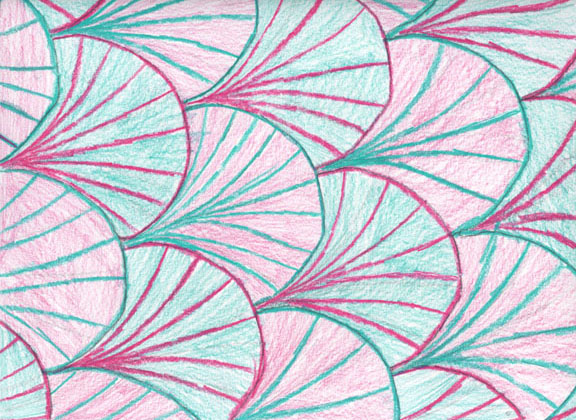 |
The two designs above are
textbook representations for the Translation type of Tessellation; the
design pattern is created by sliding the design side to side, and up and
down. Each student received an 'A' for their efforts in designing,
creating, and coloring the first Tessellation project. Though the
design on the left contains more detail than the drawing on the right, the
right tessellation meets the requirements of project rubric as well as
exhibits true effort from the student who 'struggles' in every aspect of
the Visual Art class. This child completed small renditions of this
pattern in several color combinations PRIOR to coloring the large drawing
as well as practiced drawing the outlines; suffering from Turrets
Syndrome, this child would continuously 'shake' while drawing. However,
the effort exhibited in the completion of the above design for a child who
has difficulty drawing a straight line with a ruler was outstanding and
appropriate.

|
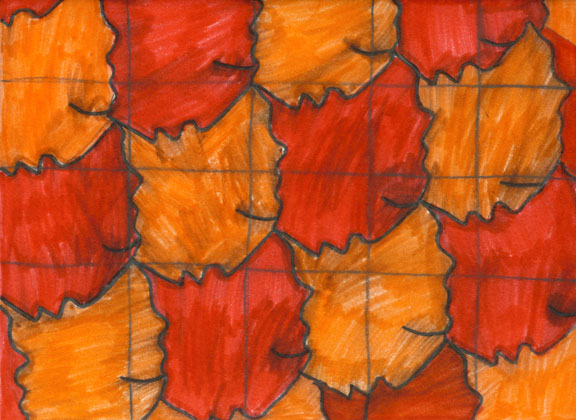 |
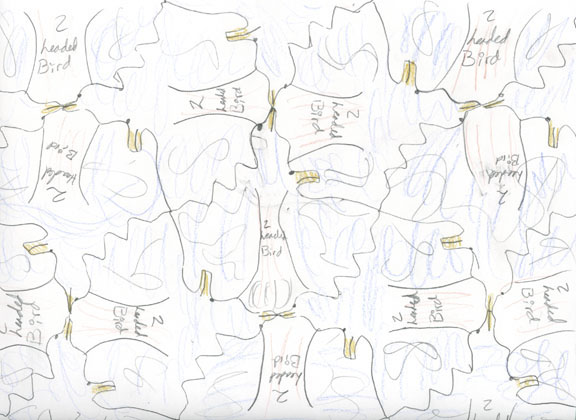 |
|
The drawings
above fail to represent the 'true' abilities of these two young
ladies. The drawing on the left was purposely produced carelessly
and without effort by a student who frequently exhibits 'laziness!'
Upon hearing that I was disappointed that she did not use her original
design (a tropical fish with much detail), she attempted to redeem herself
by randomly drawing vertical and horizontal lines to exhibit some sort of
precision in the placement of the tessellated shape. She later
stated that someone else told her that 'leaves' would be easier to
complete. The student's final grade for this tessellated piece was a
low 'C' based on the Elements of Art and additional Tessellation Rubrics.
The
tessellation attempt on the right was created by a student who recently
learned that her parents were separating. I have always found it
extremely difficult to assess artwork when I am aware of underlying
circumstances that may influence the student's concentration and effort in
their studies. Though the rubric scoring guide as presented to the
students prior to starting any art project makes them responsible parties
in the creation of their artwork, it does not provide for the
consideration of outside influences. The drawing as completed
received a 'D,' but the child was given the opportunity to resubmit
another design following a parent conference.

|
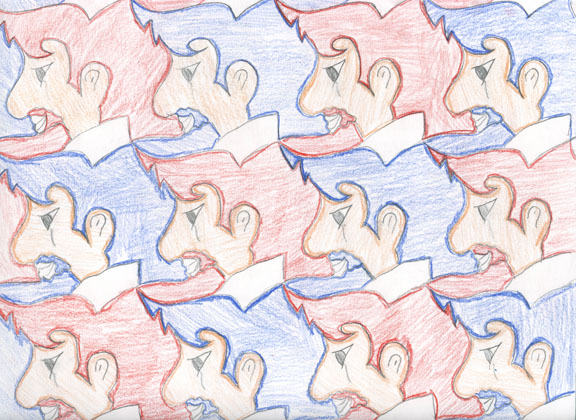 |
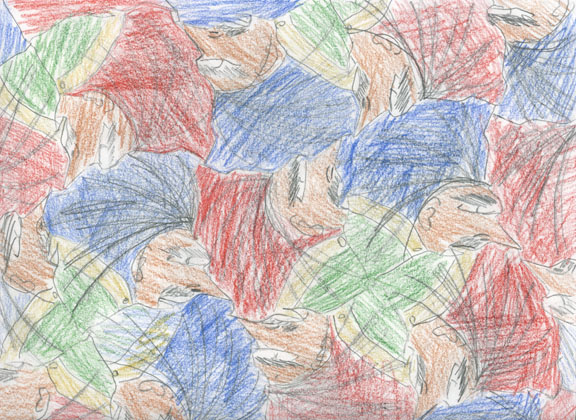 |
|
The same
student is responsible for creating the two images above. The
drawing on the right began as an excellent representation of the Rotating
Tessellation. The young man was complimented frequently for his
outstanding design development on this third Tessellation project. However,
he experienced peer pressure as the other students at his table decided to
mock him for his genuine efforts in art; the drawing on the left was his
first effort at tessellating shapes. Three other boys were
exhibiting difficulties in creating 'images' within the tessellated shape
and decided that scribbling would hide their incomplete efforts of
producing the required details. Not to be 'left out,' this adolescent
chose to participate with the crowd. When presented with the
opportunity to redeem himself, the young man recreated the design on the
right utilizing similar skills as in the first design. |

